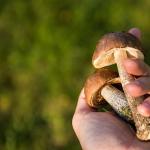Crocuses: planting and caring for them in the open field require specific knowledge so that this fragile and delicate flower takes root in the soil and pleases the eyes of the owners with its colorful petals. Another name for the plant is saffron, and most gardeners believe that it blooms exclusively in spring time. However, breeders have long developed special varieties of crocuses that can bloom in autumn.
 Saffrons are distributed throughout almost the entire territory of Eurasia and feel good in temperate climates. But, before moving on to the issue of planting and caring for outdoor crocuses, you need to choose healthy plant bulbs and allocate the right place for planting flowers in your garden.
Saffrons are distributed throughout almost the entire territory of Eurasia and feel good in temperate climates. But, before moving on to the issue of planting and caring for outdoor crocuses, you need to choose healthy plant bulbs and allocate the right place for planting flowers in your garden.
 How to choose viable saffron bulbs:
How to choose viable saffron bulbs:

Even healthy parts of future flowers require pre-treatment before boarding. It is necessary to peel off the old skin from the bulbs and disinfect them by sprinkling with ash or soaking in a solution of manganese.
Planting and caring for crocuses in the open field should take place in spacious flower beds (flowers can occupy the entire area in a short time). They should be located in an open area where there is a lot of sunlight. Therefore, it is not recommended to plant saffron under trees with a dense crown.
 The soil for crocuses of all subspecies should not be excessively wet. The soil structure should be loose, nutritious, light and not acidic. Do not be afraid if the soil in the garden does not meet these requirements, it can be made suitable for saffron using simple methods. Large river sand, gravel or crushed stone, which is used as a drainage layer, will help get rid of excessive dampness. The acidity of the soil neutralizes a mixture of peat and lime, ash or rotted manure.
The soil for crocuses of all subspecies should not be excessively wet. The soil structure should be loose, nutritious, light and not acidic. Do not be afraid if the soil in the garden does not meet these requirements, it can be made suitable for saffron using simple methods. Large river sand, gravel or crushed stone, which is used as a drainage layer, will help get rid of excessive dampness. The acidity of the soil neutralizes a mixture of peat and lime, ash or rotted manure.
Planting time for crocuses in the garden
 When to plant crocuses outdoors? It all depends on the type of plant that the gardener has chosen, but they are all divided into flowers that bloom in spring or autumn.
When to plant crocuses outdoors? It all depends on the type of plant that the gardener has chosen, but they are all divided into flowers that bloom in spring or autumn.
Spring flowering plants include:
Since the flowering of these subspecies of ornamental flora occurs in the spring, crocuses are planted in open ground in the fall. They should be planted from late September to early October.
If spring-flowering varieties are planted earlier than the second half of September, then saffron may bloom by the frost period and eventually die. And if you plant a flower later than the first half of October, then the soil for the bulbs will be too cold, they will not be able to take root in it and simply freeze.
Autumn flowering subspecies of saffron include:
Flowers bloom in the garden in autumn, and therefore crocuses are planted in the ground in spring (late May) or early summer (first half of July).
How to care for saffron?
Saffron is not a flower that needs abundant watering. If autumn or spring (depending on what kind of flower is planted) were rich in precipitation, then they should be watered only when the soil becomes dry, not only on the surface, but also in depth. Otherwise, the plants can simply rot.
Outdoor crocus care is fairly easy. Periodically, it will be necessary to weed the flower rows, getting rid of weeds. The soil (especially after rain) must be loosened so that the root system of plants has access to air.
Like any decorative flowers, crocuses need feeding. However, fertilizing saffron with organic mixtures is not recommended. It is better to purchase a granular mineral supplement enriched with potassium and phosphorus. Nitrogen-containing fertilizers should be applied with caution, in small doses, as they can provoke the growth of fungus on the plant bulbs.
Top dressing should be applied in at least 2 stages: first fertilize the soil before planting crocuses, and then during their period of enhanced growth.
Below are photos of crocuses in the open field:
Two ways to plant crocuses - video
When touching crocus flowers flash like little spring harbingers on the canopy of bright fallen leaves, it seems as if time has flowed back. It is difficult to find a more delicate autumn-flowering plant. Opening their flowers at the end of the garden season, crocuses are the closest relatives of universal spring favorites. They are grown according to almost the same rules as ordinary crocuses, only the flowering of these plants does not occur after a long winter, but before it begins.
Saffron, or beautiful Crocus (Crocus speciosus). © Meneerke bloem
Getting to know autumn crocuses better
Crocuses, or saffrons, are a favorite among primroses. They are easy to grow and even easier to care for. But of the 15 groups, which include almost 40 species of crocuses actively used in horticulture, not all are spring flowering plants.
Large group of crocuses bloom in autumn, at the very end of the season. autumn crocuses bloom after the beginning of leaf fall, and this spectacle - the contrast of a typical spring miniature flower and a garden withering for the winter - cannot leave anyone indifferent. Such species bloom as briefly as spring views but much more effective.
Like spring species, autumn crocuses are suitable for cultivation and as garden plant, and in a pot and even room culture. True, in the last rank, their flowering periods are shifted and depend on when the bulb is planted, and not on the natural cycle. It is better to use them:
- "wild" spots under bushes and trees;
- as touching accents in small groups scattered around the garden;
- in the borders and in the foreground, along the edge of the rabatok;
- near reservoirs and other water bodies;
- to decorate the lawn;
- as a seasonal accent Alpine rollercoaster or rockeries.
The best types of autumn crocuses:
1. Single yellow crocus sharoyana, the color of which is dazzling saffron. It has wide leaves and a large, graceful flower that looks like a small sun. This crocus blooms in September and October.
2. Crocus hill (or valley) in height will not exceed 12 cm, but long, up to 6 cm, petals with a milky main color and purple stripes-strokes are decorated with charming orange stains in the throat.
3. Crocus banatsky with beautiful linear autumn leaves up to 15 cm long and blooming for a month, during which each bulb produces 1-2 flowers per leaf height. Its flowers are very large, spectacular, a bit like irises, with long almost five-centimeter perianth lobes, yellow-lilac anthers and a cold lilac color.
Saffron, or Banat Crocus. © Jim Murrain
4. Crocus pretty with almost round perianth lobes, a surprisingly lush bunch of stamens and a beautiful play of color - dark purple on large veins and lighter, watercolor on the petals themselves. Its leaves bloom only after flowering, prolonged, exciting both September and October.
5. Crocus Pallas, whose flowers look like outlandish stars. This is a plant with narrow leaves that bloom only in spring, the flowers of which appear in the second half of September and, although they reach a height of only 5 cm, are very effective. Reaching almost 5 cm in diameter, they are distinguished by a lily-shaped form and a very light, radiant white-lilac color with a beautiful bunch of stamens.
6. Crocus beautiful- one of the largest autumn-colored crocuses. Its leaves develop in spring and reach a length of 30 cm. But the real "show" begins in September, when corms produce flowers up to 7 cm in diameter, white or lilac, with surprisingly touching longitudinal veins, watercolor stains, the ideal shape of wide, pointed at the edge of the petals and a symmetrical structure. In this crocus, everything is fine - both bright orange columns with yellow specks of dust in the center, and translucent textures of mother-of-pearl petals. The crocus speciosus has a huge number of intense and dark blues, cyan, purple colors varieties. Among them, the most popular are:
- grade "Oksinan" with a dark purple, with an ultramarine tint, the color of wide perianths and gracefully pointed ends of the petals;
- variety "Albus" with an original cream tube and snow-white petals;
- variety "Cassiope" with amazing contrasting veins along the most delicate blue flowers;
- variety "Aitchisonu" with large, more than 7 cm in diameter, lilac flowers;
- variety "Conqueror" with azure-blue huge flowers;
- variety "Artabir" with a sky-blue color, accentuated by dark veins.
Conditions comfortable for autumn crocuses
Autumn crocuses are much more flexible in their light requirements. Crocus Sharoyan and valley loves shade or partial shade, but it is better for other species to provide diffused lighting, sunny and bright places, or at least a semi-shady location. For autumn crocuses, a growing strategy with a sunny location in spring and autumn and shaded in summer is suitable.
Sharoyan's saffron, or Sharoyan's crocus (Crocus scharojanii). © Desvil
Crocuses do not like winds and drafts, so protected areas are chosen for them. The thing is that in these plants the flowers are sensitive to cold autumn winds, and the more protection they are provided with "neighbors" - the better.
The landing site for autumn crocuses must be selected so that during the dormant period they do not suffer from getting wet, they grow in dryness and warmth. That is why you need to choose either elevated, well-drained places (for example, on alpine slides and rockeries). Another option is to lay drainage when disembarking.
Pay attention to the soil too. For crocuses, choose light, loamy soils that allow water to pass through well. The only exception is the Dutch varieties and hybrids, which tolerate even heavy soil. Make sure the soil is neither acidic nor alkaline: crocuses love neutral soils. But they are not so demanding on fertility: the richest soils and rather poor soils are suitable for crocuses.
Features of planting autumn crocuses
Before planting crocuses, a site for them must be prepared. Mix sand or fine gravel into the soil to improve drainage, and add mature manure to poor soil, leaf soil. Autumn crocuses will gratefully respond to the application of phosphorus-potassium fertilizers (instead of nitrophoska, it is better to use superphosphate and potassium nitrate). It is better not to use peat or extinguish it with lime. In areas where there is a high risk of getting wet, make raised beds or lay drainage at a depth of 30-40 cm.
Saffron, or Crocus valley (hill) (Crocus vallicola). © oldtulips
Autumn-flowering crocuses require a slightly different approach to planting: if spring ones are planted in August-September, then autumn-flowered ones should be bought before flowering, which traditionally begins in September. The best time for them is from June to the end of the first decade of August. Do not buy flowering bulbs - they will be weakened and take several years to recover.
Before planting, inspect the bulbs again: they should be heavy, with dense shells, not crushed and soft, with a clearly visible renewal bud (small tubercle). Autumn blooming crocuses should soon “wake up”, and if the buds are invisible on them, it is better not to plant them at all or plant them in a pot and watch for signs of growth.
Autumn crocuses are planted only in groups of 5 or more, placing plants at a distance of 5-6 cm between plants. Crocus bulbs are planted at a traditional depth equal to twice the height of the bulbs themselves (from 5 to 15 cm). On heavy soil, leave a distance equal to the height of the bulb from the top of the bulb to the edge of the soil. It is not necessary to strictly monitor the centimeters: crocuses, unlike many bulbs, form retracting roots and young bulbs themselves will settle down in the soil at a comfortable depth. After planting, mulch the soil with sand to keep out slugs. Be sure to mark the landing site with sticks or other markers.
Caring for crocuses that bloom in autumn
Offering to enjoy spring blooms in atypical seasons, these small plants are easy to grow. Crocuses do not need watering, except for the coincidence of winters with little snow and extreme droughts in spring, when during the period of active growth of foliage of autumn crocuses, it is necessary to fill the need for moisture in the bulbs and water the crocuses at least several times. Plants do not need watering in autumn.
Pallas saffron, or Crocus Pallas (Crocus pallasii). © Dimìtar Nàydenov
During the entire phase of active development at the beginning of the season, crocuses need potassium and phosphorus. They can only be fed once. in early spring. Use nitrogen for autumn crocuses with caution: vigorous growth of greenery can be detrimental to flowering at the end of the season. In autumn, fertilizers for crocuses are not applied.
Digging and transplanting autumn crocuses
Crocuses can be transplanted and transferred to a new place at the same time when they are planted - from June to August for autumn-flowering species. Autumn crocuses (unless you plan to increase the number of plants and propagate crocuses, give them to neighbor friends or sell them), do not replant more than 3-5 years. Wait for signs of overflow of the "nests" and only then plant the bulbs. So the flowering will be more beautiful, and the bulbs - stronger.
After digging, the bulbs must be dried at room temperature in a well-ventilated place for 2-3 months. After drying, they remove old roots and exfoliated, bad scales, sprinkling all damage with wood ash. Bulbs with traces of rot should be discarded immediately.
Saffron, or Crocus pretty, also pretty, variety ‘Zephyr’ (Crocus pulchellus). © Meneerke bloem
Preparing for the winter
Crocuses are frost-resistant bulbs and do not need any preparation for wintering.
Diseases and pests
Autumn crocuses are considered to be more "reliable" plants than spring flowering species. They most often suffer from rot caused by excessive soil moisture, but are less commonly affected by other diseases. In new varieties, dry rot is common, which manifests itself in the beginning in small spots, then merging into whole foci. Bulbs affected by rot should be immediately discarded and destroyed. Rodents love to feast on them, therefore, with proximity to nests and increased activity on the site, it is better to plant bulbs in special nets.
Reproduction of autumn crocuses
Autumn types of crocuses are easier to propagate than spring ones: they form up to 7 daughter corms annually. Autumn crocuses form "nests" - a group of related bulbs, which, after the death of the old bulb and the formation of a new one, become independent plants. It is they that are best used to increase the collection of crocuses, because only this method preserves the varietal characteristics of plants. When digging and transplanting, daughter plants are simply separated and used as independent ones. Since they bloom for 3-4 years, usually next year most of the separated bulbs will please flowering.
Banat saffron, or Banat crocus (Crocus banaticus). © Jim Murrain
Crocus seeds can also be propagated, but this method does not allow preserving the characteristics of varietal crocuses, and fruiting autumn views- an irregular phenomenon and dependent on the vagaries of the weather. Seeds of autumn crocuses are collected in spring, after natural stratification, sowing in the same year in summer or autumn. It is best to sow in boxes or pots, covering with non-woven material or black foam. Plants from the first year are grown cyclically, but they bloom only 4-5 years after sowing.
Crocus is one of the most beautiful primroses from the Iris family. But if you plant it in the spring, you can get a second flowering in the fall. The process of growing crocuses outdoors and care is quite simple. First bright flowers will appear on the flowerbed as soon as the snow melts. At this time, it blooms massively from 2 weeks to a month. There are also autumn varieties.
plant description
Crocus or saffron is a perennial bulbous plant belonging to the Iris family. The stem of the plant is not developed. The leaves are straight, dark green in color, located at the very roots. They can appear both during flowering and after it. The root is a corm up to 3 centimeters in size. It has a flattened shape, surrounded by flat scales.
crocus flowers
Flowers in a cup are only solitary, large, they are surrounded by membranous scales. They have a bright color: from rich purple to bright yellow, cream or white. Seeds are small, angular in shape. Collected in three-celled fruits in the form of boxes.
Crocuses can bloom not only in early spring, but also in autumn. It depends on the specific type of plant.
Species and varieties
All types of crocuses can be divided into two main groups:
- spring flowering;
- autumn flowering.
The most popular species that bloom in spring include:
- spring. Plants up to 17 centimeters tall, have bright purple or white flowers. One or two flowers can develop from one corm. The flowering period is up to 3 weeks;
Spring
- golden. A plant up to 20 centimeters high, blooms in April. The leaves are very narrow and long. The flowers are bright golden. Blooms for 3 weeks, until early May;
- two-flowered. It has the most diverse shape and color of flowers. The pharynx of flowers can be white or yellow. The color of the petals can be bright white or variegated. It can be white with purple stripes or lilac with brown spots;
- Tomasini. Unusual coloring They have not only flowers, but also leaves. They acquire a delicate lilac-pink hue. The star-shaped flowers are bright white. Up to 3 flowers develop from one corm.
Fall varieties include:
- beautiful. The plant reaches a height of 30 centimeters. The variegated flowers have a beautiful lilac color with purple streaks. There are also varieties with blue, white, bright purple or pale blue color.
Beautiful
- Banat. The plant was named after the Banat region, located in Romania. Beautiful light lilac flowers have bright yellow anthers. Plant height is from 12 to 14 centimeters;
- pretty. Plant height from 7 to 10 centimeters. The flowers have a beautiful lilac color with dark stripes.
The most popular varieties:
- Nanette. Spring variety with creamy yellow flowers. On the outer side of the inflorescences there are purple stripes;
- Blue Bonnet. Spring flowering variety with beautiful pale blue flowers;
- Lylek Beauty. Spring-flowering variety with wide open inflorescences. Their coloration combines a lilac hue on the outside and a bright blue on the inside.
- And G. Bowells. Spring-flowering variety with rather large flowers of bright yellow color;
- Albus. Autumn variety with a pronounced white shade flowers;
- Oksinan. An autumn-flowering variety with variegated flowers. Inflorescences combine shades of lilac and blue with a dark perianth;
- Artabir. An autumn variety with sky blue flowers and dark bracts.
The Dutch are widely used hybrid varieties. They have especially large and beautiful flowers. It can be:
- Albion. Hybrid variety with white goblet flowers;
- Jubilee. A hybrid variety that has goblet flowers of lilac color with a violet-purple hue.
- Kathleen Perlow. A hybrid variety that allows you to decorate a flower bed with cup-shaped white flowers.
Best combined with landscape design both spring-flowering and autumn-flowering varieties.
Many hybrid varieties in the spring can continue to bloom until the end of May.
Growing time
The timing of planting crocuses in open ground directly depends on the flowering time of a particular variety. It could be:
- Spring varieties are planted in open ground in August or September. Plants that have overwintered in the open field will bloom, depending on the variety, in early April or May.
- Autumn varieties. Landing in the ground occurs in May - June. Beautiful flowers in the flower beds will appear in September or October.
The most famous spring varieties of crocuses are one of the most beautiful primroses.
Landing in open ground
Crocus is enough unpretentious plant. Before flowering and during it, plant care is minimal. Almost any soil is suitable for cultivation, but it grows best on light loam. It is undesirable to plant it on acidified or marshy soils. Grows very well in open, sunny areas.
Planting bulbs
To get healthy and strong plants, you need to choose the right planting material. Corms must be:
- without external defects (dark spots, traces of mold);
- mechanical damage;
- traces of rot.
Corms must be freed from external film scales and old roots before planting.
Autumn varieties of crocuses are sometimes sold in flower shops or nurseries with old flowers. Such a plant rarely takes root. It is best to purchase corms that have not yet had time to bloom. Before planting, nutrient-poor soil should be fertilized with manure or compost and dug up.
Thereafter:
- Dig holes up to 10 centimeters deep;
- Drainage from expanded clay or sand is placed at the bottom of the hole;
- Corms are placed in the wells and wrapped with earth.
If, when planting, at the same time fertilize from rotted peat, the plants will be stronger. They will definitely reward with bright and long flowering.
Crocus is a drought-resistant plant, but does not like excessive moisture. Water moderately after planting.
Crocuses require care only during the growing season. It includes:
- top dressing. Spring varieties can be fed with mineral fertilizers, such as urea. They can be stolen in March right on the snow, after which they themselves will be absorbed with melt water. To do this, I use peat, manure and nitrogenous fertilizers. The first top dressing is carried out during the period of "pecking" of the sprouts. The second top dressing is carried out during the flowering period, and the third before the dormant period;
Urea
- watering. Crocuses need it only if there was little snow in winter. Autumn varieties should be moderately watered throughout the summer.
- transfer. Once every 4 - 5 years, crocuses must be transplanted. This prevents the crushing of not only flowers, but also bulbs.
During the dormant period that occurs after flowering, crocuses do not require constant care.
Crocuses after flowering
After the spring flowering period has ended, you need to properly prepare them for the dormant period. For this:
- Trim dried inflorescences;
- When the leaves dry, they are also cut off. After that, the bulbs are dug up for autumn planting in the ground.
Autumn-flowering varieties of crocuses do not have to be dug up and replanted every year.
If corms are not needed as planting material, they are left to winter in the ground. To do this, it is enough to mulch them with peat or dry leaves.
bulb storage
Before storage, the bulbs are sorted and dried. The planting material preparation process includes:
- Cleaning. Corms are thoroughly cleaned of pieces of soil, old roots and scales;
- sorting. Damaged by pests or weakened corms are thrown away.
- Drying. Prepared corms are laid out for drying in boxes at a temperature not lower than 22 C.
Dried bulbs are stored in a dry and dark place.
At home, crocus bulbs are stored at room temperature, in a room with good ventilation.
For more details on growing crocuses, see the video
Conclusion
Crocus, or saffron, is a perennial bulbous plant that can grow in one place from 3 to 5 years. There are more than 15 types of crocuses, which can be divided into 2 groups: spring-blooming and autumn-blooming. Crocuses are quite unpretentious to growing conditions. They are cold hardy and drought tolerant. The plant does not like high humidity.
Crocus is a small and fragile, but very beautiful flower. That is why you need to know how to properly implement planting and care in the open field behind them. Crocuses are also called saffron. Most often they bloom in spring, but there are already many species that bloom in autumn. These are very popular flowers, gardeners and hobbyists often want to grow them. at home. Due to its diversity and non-trivial appearance, crocuses in the garden frequent visitors, they delight the eye from early spring to late autumn.
Bulb selection and planting sites
Efficient, convenient and very fast. When you need to lose 3-4 kilograms in a week. Read more here…
Most often, saffron blooms in moderate climate zone, although there are varieties that feel comfortable in other areas. Before deciding on a planting site, you need to select healthy crocus bulbs. To crocuses in the garden grew beautiful, you need to choose healthy material and choose the right place on the site.
What should be viable and healthy bulbs:
- There should be no extra sprouts and roots.
- Healthy bulbs should be dense and firm. When they are soft and loose, they most likely will not germinate.
- If they appear on the bulbs dark spots which means they are rotten.
- Mechanical defects also indicate the unsuitability of the material.
When the material is selected, it must be processed before planting. For disinfection, remove the excess skin from the bulbs and hold them in potassium permanganate or sprinkle with wood ash.
Important! Crocuses are very fond of sunlight. It is necessary to plant them in spacious flower beds, as the flowers will occupy the entire area in a short time. You should not plant crocuses under trees with a dense crown.
It is necessary to plant crocuses in nourished, non-acidic, slightly moistened soil, which must first be carefully loosened. If the soil in the garden does not meet the requirements for crocuses, it can be made suitable using a few simple methods. In order to get rid of excessive moisture, you can use drainage from river sand, gravel or crushed stone. Adding a mixture of peat and lime, ash or rotted manure to the soil will help neutralize the acidity.
Watch the video! Two ways to plant crocuses in the soil
When to plant saffron
When should crocuses be planted outdoors? It depends on the type of plant chosen for planting. They are spring flowering and autumn.
Spring bloomers are:
- Crocus spring. Low flowers, up to 17 cm, have lilac or white buds. Bred as decorative flower from the 16th century.
- Two-flowered. A colorful and interesting look. Often the flower has a bluish color, and the surface of some leaves is brown. Or the flowers themselves can be white and decorated with purple stripes.
- Golden. The plant is about 20 cm tall, blooms in all shades of yellow. The surface of the petals is glossy, sometimes with brown stripes.
Important! Species that bloom in spring are planted outdoors in autumn. The optimal landing time is the end of September - the beginning of October. If the deadlines are shifted, the flower may suffer.
When planted ahead of schedule, the crocus may begin flowering before the first frost, and then it will die. If the bulbs are planted later than this period, the earth will already be too cold, the flowers will not have time to take root and strengthen well, so they will die in winter.
autumn crocuses- this is:
- Crocus is beautiful. A rather tall and large plant, reaches a height of 30 cm. Its buds are blue, lilac or white with purple veins.
- Crocus is nice. Frost-resistant subspecies. Pale purple flowers are covered with dark stripes and look very impressive.
- Banat Crocus. Possesses unusual leaves with a silvery tint and bright lilac buds.
Important! Since these types of crocuses bloom in autumn, they are planted in open ground at the end of May or in the first half of July.
Basics of care
Saffrons do not like strong watering and moisture. If the season in which the flowers are planted is abundant in precipitation, then special watering is not required. Crocuses should be watered when the earth dries up not only on the surface, but also in depth. Otherwise, the plant bulbs will simply rot.
Look after for saffron it is quite easy, the main thing is to fulfill the basic requirements:
- Weed regularly between flower rows.
- Periodically loosen the soil so that the root system can breathe better.
- Feed, but do not use organic mixtures. good remedy for fertilizer will be mineral dressing containing potassium and phosphorus. Means that contain nitrogen must be applied with caution, since sometimes a fungus appears on the bulbs from its excess.
You need to feed twice:
- Fertilize the soil before planting the bulbs;
- The second feeding is carried out during the period of active growth.
Pests and diseases of crocuses
Viruses. If white spots appear on the leaves of saffron and they are deformed, this is the first sign of infection with viruses. In this case, it is necessary to destroy the already infected plant so that it does not carry the virus to healthy flowers. The place where the affected plant grew is treated with potassium permanganate.
Fungus. Activated in warm and damp weather. The bulbs begin to soften and wrinkle. Often strange spots appear on them. The bulb, which is already affected by the fungus, is destroyed, and the daughters are dried in a cool place. Before planting, it is necessary to soak the bulbs in manganese or in a 0.2% solution of Fundazol.
Chlorosis. The main sign of damage is yellowing of the leaves. Often this is due to improper planting, drainage, lack of any nutrients in the soil, or damage to the bulb.
Mice and moles. They can damage tubers when they break through their underground passages or even drag the bulbs into their holes, because they often use them for food. Here, only cleaning dead wood within a radius of 3 meters from the landing site of crocuses will help, so that they have nowhere to place their nests. Mice do not go further than 3 meters from the nest.
Scoop butterfly caterpillars. Insects gnaw at the roots and make holes in the bulbs, looking for a place to pupate. Such bulbs, along with caterpillars, must be dug up and destroyed.
Slugs. You can get rid of them with a special solution. As a prophylaxis against slugs, when planting saffron in the ground, a “cocoon” of sand is made around the bulb.
Proper storage
After the flower has faded, the leaves are cut from it. There is no special need to dig up saffron every year for the winter. You can leave the bulbs in the ground, but they must be covered with spruce branches. If the bulbs are dug up for the winter, then they must be carefully sorted out, the bad ones rejected, and the rest cleaned of dead scales. Unusable specimens are destroyed, and bulbs with minor damage are treated with brilliant green or sprinkled with ashes. Having processed them in this way, the bulbs are placed in the shade for 7 days to dry. The next step is sorting. They are divided by size and laid out in containers in which there are holes for ventilation. stored homemade crocuses until the next landing in the ground.
Watch the video! How to plant crocuses
There is something mysterious and touching in the picture, which can be observed with the arrival of spring, when primroses stretch their fragile stems with delicate buds straight from under the snow towards the sun. She causes delight, wonder and storm positive emotions, which is why crocuses are so loved by gardeners: planting and caring for them do not take much effort and do not require special costs and the results are inspiring. Popular and cultivation of these bulbous flowers at home.
Soil and site requirements
For planting crocuses in the garden, it is advisable to choose open area, which warms up well and is illuminated by the sun. But their cultivation in open ground will be successful in the shade of deciduous trees. In early spring, when the time comes for crocuses to bloom, their branches are not yet covered with dense foliage and do not obscure the light they need from the plants. In heavily shaded areas: under coniferous trees, near the walls of different buildings - the development of perennials slows down. They form fewer buds, which also do not fully bloom. The natural environment for crocuses are meadows, where in the neighborhood they are found in abundance perennial herbs. This makes it possible to plant them in the area next to ornamental plants medium height: peonies, ivy.
Primrose bulbs are demanding on the level of soil moisture. So that growing crocuses does not end with their rapid decay and death, it is important to choose a dry, well-drained site for them. You can determine a suitable place for flowers by meeting 2 requirements:
- moisture does not stagnate on it after melting snow or rain;
- groundwater is located far from the surface of the earth.
Loose soils are ideal for crocuses, providing their bulbs with free access to air and moisture and rich in nutrients. Light loams are well suited for them. It is impossible to call a culture demanding in terms of soil quality. Its cultivation is also possible on depleted soil. Some hybrid varieties of crocuses are successfully bred in areas with dense clay soil.
Mandatory conditions for the full development of flowers are a neutral soil reaction and good drainage. If you have to plant plants in acidic soil, lime is first added to it, dolomite flour, ash, chalk. They will help optimize the content of hydrogen ions in the earth and create favorable conditions for the development of crocuses.
Dense clay soil before placing the bulbs in it, you need to make it more porous by adding coarse-grained river sand, well-rotted compost or fine gravel.
You can enrich the soil for flowers by digging it with organic fertilizers. Suitable for this compost, rotted manure, peat.

Landing Features
Planting crocuses in open ground, depending on their variety, can be carried out in summer or autumn. If the flowering period of a plant falls in the spring, its corms are placed in the soil in September. The depth of the hole depends on the structure of the earth on the site. When planting in loose soil, it is equal to 2 bulb diameters. In a situation where the soil in the garden is dense and heavy, the depth of the hole is made equal to 1 diameter. A drainage layer of gravel, coarse river sand, broken brick, crushed stone or pebbles is laid on its bottom. If the selected crocus variety is afraid of moisture, the beds for it should be made high.
Bulbs should be planted at a distance of at least 7-10 cm from each other. They are carefully inspected beforehand, rejecting damaged and diseased ones. Growing crocuses will require regular transplants, which are carried out every 3-5 years. During this time, many children appear on the bulbs, and the flower bed begins to resemble a lawn completely covered with flowers. Therefore, initially it is better to plant plants at a significant interval. After placing the bulbs in the ground, the beds are watered abundantly.
If a variety of crocuses is chosen for breeding, the flowering period of which falls in autumn, they are planted until mid-summer. Then their tender buds will bloom in September or October. The cultivation of such varieties has its own specifics. It is not recommended to plant them in open ground with collected or already opened buds. Otherwise, the chances of successful survival of the plant are negligible.
If the crocus with buds wilted after being placed in the ground, it is necessary to cut off the withered foliage and flowering stem from it. He will release new ones next year. However, the plant will fully bloom only after 2 years, when its bulb has accumulated enough strength.

Crocus Forcing Secrets
You can also admire the graceful buds of crocuses in winter. They feel comfortable at home, while taking care of them in a pot is not at all difficult. Ideal for forcing Dutch plant varieties with large flowers. Their bulbs are subjected to a thorough inspection, selecting approximately the same size.
For breeding crocuses at home, it is better to use shallow, but wide containers. 5-10 bulbs are planted in them, depending on the size of the pot. The soil is poured into it neutral, light, porous, well-permeable to air and water. Drainage is laid at the bottom of the pot. This element when planting crocuses is required both in the garden and at home.
When the bulbs fade, they do not stop caring for them. They need to be watered and fertilized. For top dressing, complex mineral compositions intended for indoor plants are usually used, dissolving them in water in a smaller proportion than indicated by the manufacturer. They begin to gradually reduce watering at home when yellowness begins to appear on the leaves of the crocus. After they have completely dried out, the bulbs are removed from the pot and the remains of the soil are carefully removed from them. Then, wrapping them in a clean napkin, place them in cardboard box, which is placed in a dark and dry place. Bulbs are stored there until the beginning of autumn, and with its arrival, the time comes for their planting in the garden.

Agricultural rules
Caring for crocuses in the open field will not take much time. They practically do not need watering. It will be necessary to moisten the soil in the beds only if there was no snow in winter, and rain in spring. The amount of water received by the bulb only affects the height of the plants; in general, they tolerate drought well. In summer, watering crocuses is even harmful; in the dormant phase, dry soil is preferable for them.
The essential elements of flower care include:
- top dressing;
- regular loosening of the soil;
- weed removal.
During the period of active growth, plants need to be fed. Fresh organic fertilizers are contraindicated for them, their application can provoke various diseases. Feed them only mineral compositions. Of these, it is better to choose those that contain a lot of phosphorus and potassium and little nitrogen. Its excess in the soil stimulates active growth on the flowers of extra leaves, because of which they can be hit fungal diseases. It is especially dangerous in wet weather. It is permissible to use peat or manure to enrich the soil, but only completely rotted.
Two feedings are recommended. The first is carried out in early spring, while the snow has not yet melted, scattering complex fertilizer over it. The second time crocuses are fed when 14-21 days have passed since the beginning of their flowering, using preparations with a minimum nitrogen content. During this period, plants especially need potassium. It helps their bulbs turn into high-quality and healthy planting material. After the foliage on crocuses turns yellow, they are left alone until the end of the season. 
Crocuses are wonderful plants that are one of the first, after long dull months filled with snow and cold, to fill the garden with bright colors and give a charge of positive emotions. The very personification of spring, they look spectacular on the alpine hills, giving them a unique charm. It will be impossible to take your eyes off the magnificent living carpet if you plant them in a dense canvas on a flower bed or lawn. And their cultivation in pots at home will allow you to admire the magnificent flowering in winter.
In addition to their high decorative qualities, crocuses are surprisingly unpretentious; even an amateur with no experience in gardening can handle their planting and reproduction. They need minimal care in the form of fertilizing, loosening the soil and weeding. Plant crocuses in your garden and you won't regret your decision for a minute!
Crocus (or saffron) - a welcome inhabitant of the spring garden, representative bulbous plants who is in a hurry to get out from under the snow in the gardens. When to plant crocus in autumn delicate flowers were able to get out frozen ground and bloomed for a long time, until the larger brothers blocked the sun from them?
This fidget can not sit underground. Crocus wants to soak up the sun, while everything around is spacious and everything is permeated sunbeams. It is necessary to have certain knowledge so that one of the first spring flowers can proudly raise its head as soon as the sun warms the soil with its rays.
Varieties of crocuses for planting in the fall
Crocus or saffron is an extensive botanical genus, including more than ninety species of bulbous plants.
For the autumn planting of crocuses, it is necessary to choose varieties that bloom in early spring:

Land preparation for planting crocuses in autumn
A place for planting crocuses must be allocated where there is a lot of sunlight. Crocuses do not grow well in moist soil. Crocuses like light, well-drained soil. There is nothing to worry about if, in the place designated for planting crocuses, the soil does not sufficiently meet these conditions.

There are 5 simple ways to give crocuses the opportunity to grow and bloom beautifully:
- Reduction of excess moisture can be achieved by drainage;
- Drainage is made of coarse river sand, crushed stone or expanded clay at a depth of more than 20 cm;
- For better air exchange and water permeability, the earth is dug up with humus and river sand to a depth of 20-25 cm a few days before the autumn planting;
- Acidic soil can be neutralized with a mixture of peat and lime;
- Before autumn planting, it is good to feed the bulbs, but only with granular mineral fertilizers rich in potassium and phosphorus.

In autumn, noble saffron lays flower buds and will delight with a luxurious flower.
Preparation and storage of tubers before planting in the fall
Work on planting crocus bulbs in the ground in the fall must begin in the middle of summer. The plant is at rest. It's time to dig up the crocuses.
You can not cut the leaves of crocuses before their natural death, the plant is stored with food after flowering
How to identify a healthy tuber:
- The onion should be heavy and dense;
- Overgrown, shaggy roots will not give good seedlings in early spring;
- Dark spots on the tubers indicate the beginning of rotting.

Healthy tubers must be dried in a shady place for at least a week, and then separated from small bulbs, separate the nests and select the babies that easily move away on their own.
Place the dried material for half an hour in a strong solution of potassium permanganate and dry again. Store in a dry place by putting them in wooden boxes in one layer at room temperature.
Planting crocuses in the fall in the ground
When to plant crocuses in autumn? It all depends on what the weather will be like. Warm and long autumn, and even Indian summer, will delay the planting of crocuses until early November. But, if bad weather was charged back in September, and even frosts came, then it's time to start planting the bulbs. Crocus tubers begin to awaken when the temperature in the ground drops to 10 o C.
We dig holes in the prepared soil. Its depth depends on the composition of the soil and the size of the bulb itself. The larger the planting material, the larger the hole should be dug. For bulbs to grow to rocuses, you need to plant them only 5 cm into the ground and you can get up to 10 children.
In order for the crocus to bloom longer, it is necessary to plant the seeds deeper and less often it will be necessary to divide the overgrown tubers.
The distance between the holes is no more than 10 cm. Crocuses quickly become overgrown with children. Fans of a thick carpet of crocuses can reduce the distance between planting material to 3-5 cm. Then you will have to deal with transplantation not after 4-5 years, but after 2 years. Crocuses are watered after planting only when the autumn is dry and the soil requires moisture.

Crocus care in autumn
Autumn care for planted flowers consists in watering if the autumn turned out to be dry. You need to loosen the earth after each watering.
Weeds must be removed regularly. In the case of endless heavy autumn rains, it is necessary to protect the tubers from excessive moisture by covering them with a film. Fertilize crocuses in the fall should not be.

We should not forget about the pests and diseases of these little proud ones:
- Mice love delicious crocus bulbs and often drag them into their burrows to feast on in the winter. It is enough to cover the plantings with branches or use ultrasonic repellers;
- The holes in the bulbs are made by scoop butterfly caterpillars. They just need to be collected during the autumn planting;
- Slugs in the area where the crocus is planted can be removed by mechanical collection of these pests;
- You can get rid of the wireworm, which causes great harm to crocus bulbs, by making traps from wet grass or hay. Cover them with boards and collect pests after a few days;
- Gray rot appears on small, underdeveloped tubers. Get rid of them when inspecting the tubers or sprinkle with ashes.

Crocus tubers easily tolerate the winter cold, but after the first cold snap in the fall, loosen the ground where the crocuses are planted and add mulch here. It can be peat, leaves of trees that have fallen in autumn in the garden, or spruce branches brought from the forest.
A gallant crocus planted in autumn will proudly raise its beautiful head on a spring lawn in gratitude for the care and efforts.
To print
Nadezhda Filatova 08/24/2015 | 7561
In the spring, crocuses are among the very first to appear in the front garden. Growing these delicate flowers does not amount to great work if you know the secrets of autumn planting crocuses.
Spring-flowering species and varieties of crocuses must be planted in the ground in mid-September. Crocuses planted at this time will bloom sometime in April-May. Autumn-blooming species and varieties are recommended to be planted at the end of August.
How to choose quality crocus bulbs
The choice of crocus bulbs is not fundamentally different from the choice of other bulbs. At the time of buying seed material pay attention to appearance bulbs.
They should not have visible mechanical damage, regrown roots or stems. To the touch, the bulbs should be dense, with dry scales. Soft or broken bulbs should not be chosen, as they most likely have already begun to rot.
Processing crocus bulbs before planting
Before planting the bulbs in the ground, they can be pre-etched in a solution of any fungicide (Fundazol, Maxim, Skor, Vitaros or ordinary potassium permanganate) or a growth stimulator (for example, Epin). This is necessary to prevent the development of diseases and the appearance of rot.
Almost all pickling solutions are prepared in the same proportion- Dissolve 2 ml of fungicide in 1 liter of water.
Before using the drug, be sure to read the instructions on the package.
One ampoule (usually 2 ml) of the drug must be dissolved in 1 liter of water. In this amount of fungicide, up to 1 kg of bulbs can be treated.

When the solution is ready, carefully lower the crocus bulbs into it and leave for 30 minutes. After half an hour, you can take them out and start landing. It is not necessary to wash the pickled planting material.
If there is no fungicide at hand, crocus bulbs can be pickled in a light pink solution of potassium permanganate by literally pouring a pinch of potassium permanganate into 1 liter of water. They need to be kept in the solution for about 30 minutes.
Preparing the soil for planting crocus bulbs
Crocuses love nutritious loamy or sandy soil with good drainage. In waterlogged soil, the bulbs may begin to rot. It is better to choose a well-lit place for planting crocuses - in the shade the flowers will be small or may not appear at all.

If the soil in your area clayey and very heavy, it needs to be dug up well by adding coarse sand or compost (1-2 buckets per 1 sq.m). Well-rotted manure, peat and lime should be added to clay soil at the rate of 0.5 kg per 1 sq.m. Additionally, you can add superphosphate at the rate of 40 g per 1 sq.m.
Superphosphate can be applied no earlier than a month after lime has been added to the soil.
AT sandy soil is deficient in nutrients. Therefore, when digging, it is desirable to add peat, rotted manure or leaf humus at the rate of 5-7 kg per 1 sq.m.
When planting crocuses in loamy or sandy loam The soil does not need to be supplemented with additional fertilizers. It is enough just to dig the ground to a depth of 20-25 cm.
How to plant crocus bulbs
It is best to plant crocuses in special containers so that the bulbs do not "spread" throughout the flower bed. If you want to create a voluminous flowering clearing, plant the bulbs close enough to each other - at a distance of about 3-5 cm.
The optimal planting depth for crocuses is three bulb heights.
Small onions are usually deepened by 5-6 cm, larger specimens by 10-12 cm.
If the winter in your area is too severe, when a steady cold snap sets in, the landing sites can be covered with spruce branches or fallen leaves. But usually crocus bulbs tolerate even severe frosts well.
What to do when crocuses bloom
After the end of the flowering period, wilted leaves and flowers must be cut off, and sown in place of an empty flower bed. Crocus bulbs can be left untouched, leaving them in the ground until next spring, or you can dig, sort, dry and put away for storage.
Following our simple tips and following all the steps of the master class, you can easily grow crocuses in your backyard and enjoy their abundant flowering.
How right crocuses or saffron? Saffron is a more correct name, and crocus is a Russian derivative of the Latin name.
As soon as the first spring days come, the garden is decorated with flowering crocuses. It is these garden bulbous flowers that show others that spring is coming. Both amateurs and professional gardeners love to decorate the plots with these primroses, because their thin stems show up from under the melting snow and gracefully reach for the sun.

Crocus flowers begin to break through a thin layer of snow along with delicate snowdrops and scillas. After their appearance, it is generally accepted that the summer season has opened, and it is time to go out of town and enjoy spring and "spring work".
Even the most inexperienced grower can grow them in his garden. That is why all summer cottages are decorated with these amazing flowers.
Characteristics and description of saffron
 Photo crocus flowers, which fully testify to all their unusualness and beauty, belong to the Kasatikov family. There are about 20 varieties. AT natural environment grows on rocky slopes and meadows located high in the mountains of the Crimea, the Caucasus, the Mediterranean, Central Asia, as well as in central Europe.
Photo crocus flowers, which fully testify to all their unusualness and beauty, belong to the Kasatikov family. There are about 20 varieties. AT natural environment grows on rocky slopes and meadows located high in the mountains of the Crimea, the Caucasus, the Mediterranean, Central Asia, as well as in central Europe.
As a rule, almost all varieties bloom with the onset of spring, but you can find varieties that begin flowering in autumn, the so-called autumn-blooming crocuses.

white crocuses
A feature of unusual primroses is no aboveground shoots. In addition, they are characterized by large, upward looking inflorescences. During their flowering, the blooming flowers can be compared to glasses or funnels, consisting of six petals growing from a corm. After the buds are fully bloomed, they are cup-shaped or star-shaped.
On personal plots, you can grow not only the original species, but also beautiful and large hybrids bred by professionals. The timing of planting crocuses in the fall in the Moscow region, for example, is similar to growing in other cities of the country.
Saffron stigmas are dried and used as a natural yellow dye or spice in many countries since ancient times. Not all varieties are suitable, but only sowing crocus, Altava (Crocus alatavicus) or beautiful saffron, from the "nominal" Palasi variety, aka Crocus pallasii. More detailed information can be seen.
Crocus varieties with photos and names
The Iris family, to which the Saffrons belong, has about 80 species, most of which have excellent decorative qualities and are widely used in the landscape. Crocus and Crociris, these two groups divide this plant genus.
Crociris includes only one species, the Banat crocus or C. Banaticus. The height of which varies from 10 to 14 cm. It is characterized by funnel-shaped perianths, the color of which can be soft purple or saturated purple. It occurs naturally in Romania. Flowering begins in September. It is quite rare, but multiplies easily. It has an original shape similar to.
If we talk about the genus Crocus, then it is worth noting that it includes the remaining varieties.
Among the spring-blooming are:
- botanical C. botanical
- C. largeflowering hybrids
Varieties of botanical primroses:
These include small-flowered varieties growing in the natural environment.
Crocus golden or chrysanthus -C. chrysanthus
The height of this species is about 20 cm. It is endowed with narrowed leaves that break through the soil along with buds. Flowering begins in the days of April and lasts, not too long, to the great regret of the fans, somewhere around 15-20 days. Has a golden yellow tint. The outer part of the petals is shiny, often with darker strokes and stripes, the perianth segments are curved. You can find varieties of various colors obtained by crossing various types. Sometimes there are two-color hybrids.
If we compare them with the Dutch species, then it is worth noting that the chrysanthus has smaller inflorescences, and blooms buds much earlier. They are also able to produce several flowers from one bulb.

 Popular varieties:
Popular varieties:

Tomasini - Crocus tommasinianus
Since 1847, it has been considered the most sought-after species. In the wild, it can be found in deciduous forests and on the hills of Hungary, as well as the cities of the former Yugoslavia. It can be distinguished from other varieties by pink-lilac petals, which are sometimes decorated with a white border. After full opening, the buds become star-shaped with a snow-white throat and tube. One bulb can produce about 3 flowers, whose height reaches 6 cm. Flowering begins in mid-spring and lasts about 3 weeks.

The following varieties are distinguished:
- Lylek Beauty. The diameter of fully opened buds reaches 3 cm. It is characterized by yellow anthers and oval, slightly elongated narrowed lobes. The outer side of the petals is lilac, the inner side is slightly lighter.
- "Whitewell Purple". Large, fully opened flowers reach up to 4 cm in circumference. Flat lilac-violet hue petals have elongated lobes. The length of the white tube reaches 3.5 cm.
Scottish or two-flowered crocus - C. biflorus
Crocus primroses in the wild can be found in the south and south-west of Europe, in Asia Minor and in the Caucasus. This variety has red and purple flowers with yellow stigmas.

 There are the following varieties:
There are the following varieties:
- "Alexandri". It has incredible decorative qualities. It is characterized on the outside by saturated purple petals with a snow-white edging. His inner part white. Due to the variety of colors it is in incredible demand.
- 'Parkinsoni' has straw-yellow outer petals, the inside of which is pure white with an orange center and small blue flecks that dot the pith.
- "Albus" has snow-white petals, without any color splashes.
- Variety "Fairy" decorates spring garden hatching bluish-glaucous flowers.
Sieber - C. sieberi
These tricolor crocuses are not easy to find in a flower bed, as our gardeners rarely use them in landscape design, even though they are the most beautiful of all varieties. You can meet in Greece, Bulgaria, Macedonia in mountainous areas. Height varies from 8 to 10 cm, differs from other members of the family in its tricolor color. In nature, you can see the petals, the color of which varies from soft pink to deep purple with a yellow center and orange stamens.

Varieties:
- Bowlesis White. Among the snow-white petals you can see a rich orange throat.
- "Atticus". Flower blue tint and yellow-orange center.
- "Tricolor". Top part petals is painted in a rich purple color, while the lower one is slightly lighter. The throat is bright yellow.
Crocus Korolkova - C. korolkovii Maw ex Regel
It is a low Central Asian species, the shoots of which reach up to 6 cm. It has orange flowers, the outer part of which is decorated with red stripes. You can find varieties bred in Russia by local breeders. Therefore, the species has a “Russian name”.

The most famous:
- "Glory to Samarkand"
- "Kiss of Spring"
- "Tiger"
Spring crocus - C. vernus
It is one of the most common types. Their beauty can be seen from the photo of crocuses in spring. In nature, they are found in meadows located high in the mountains of the Alps and the Pyrenees. Single inflorescences are painted in purple or purple and reach up to 5 cm in circumference. Thanks to this species, various hybrids have been created that are grown all over the planet. As a rule, they are divided into two groups, large-flowered and Dutch.

- Nigro Boy. It has a goblet shape of about 4-5 cm. At the base, the petals are saturated purple, the rest of them are lilac lilac shade. Flowering begins in early spring and lasts until June.
- Flower Record lilac magenta tone.
Large-flowered Dutch hybrid crocuses

colorful primroses
Large-flowered include all Dutch varieties, which are based on spring crocus, which was described above.
Dutch hybrids are unpretentious in care and produce many large flowers, the size of which is much more species from which they were derived. First appeared in 1897. Today, there are more than 50 varieties, which are divided into categories according to their color.
- The first includes snow-white and white with multi-colored splashes.
- The second includes varieties of purple, lilac and lilac.
- The third contains reticulate or striped flowers, some of which are decorated with a speck at the base.
Flowering begins in May and lasts for 10-17 days.

On the territory of Russia, you can grow the following species:
- "Albion" with snow-white glasses with a diameter of about 4 cm and a purple pipe, the length of which reaches 5 cm.
- "Vanguard" has a cupped shape of blue-lilac color and a circumference of about 4 cm. The elongated oval petals are decorated with small spots that become darker towards the base. A bluish lilac tube about 4 cm. It begins to please with its flowering in April.
- "Jubilee" will delight you with their glasses of blue color with an almost imperceptible purple-violet tint. At the base of the petals there is a clearly defined light purple speck, and a narrow light strip runs along their edge. Gently purple pipe in length does not exceed 5.5 cm.
- "Sniper Banner" is a glass that reaches 4 cm in diameter. The oval lobes are painted gray-lilac on the outside, and lilac on the inside with a denser mesh. In the center there is a small but clearly defined dark lilac speck. The 4 cm tube is saturated with a lilac-lavender hue.
- 'Kathleen Parlow' is a variety that will brighten up your garden with its unusual flowers. If you are interested in how photo crocuses bloom, which shows all their unusualness, then you should find out that they produce cup-shaped snow-white flowers, the circumference of which is about 4 cm. There are small lilac strokes in the center on the inside of the petal, they are also decorated with 5 cm of white tube.
Crocuses blooming in autumn
It is worth noting the following varieties, the flowering of which begins in September or October:
- The Banat variety has a gently lilac flowers and reach up to 14 cm in height. Gray-silver linear leaves reach about 15 cm.
- Crocus pretty grows to about 7-10 cm and their circumference is about 6-8 cm. Light glasses are decorated with dark purple stripes. This species is not afraid of minor frosts. The number of flowers formed on one bulb varies from 5 to 10 pieces.
- Beautiful autumn-blooming crocus is characterized by soft purple lilac, snow-white, deep blue and blue flowers. It has rather long leaves, the size of which can reach 30 cm.

There are the following varieties:
- Albus - white flower, the tube of which is cream-colored.
- Artabir - pale blue flowers, the bracts of which are darker.
Planting time: when to plant crocuses?
 Remember the golden rule!
Remember the golden rule!
Primroses that bloom in the spring should be planted in the fall, and those that bloom in the fall should be planted in the ground in the summer.
It is necessary to opt for sunny and slightly shaded areas. They will also do well in the shade.
If you are wondering how to plant crocuses in the fall, then you should know that they prefer light, dry, nutritious and loose soil. To make tender sprouts break through more easily.
Be sure to drain the chosen place by pouring gravel or coarse-grained river sand into the hole.
Do not hesitate to use organic fertilizers, which are:
- vegetable compost
- rotted manure material
- quality peat
Important! Grow in soil hyperacidity crocuses will not.
If the earth is clay, then add ash to it. There are varieties that do not like to grow in soil with high humidity. For such species it is worth building high beds, the drainage layer of which consists of crushed stone or gravel.
How to plant crocuses in autumn
If you dream of filling your garden with small bushes blooming in spring, then you need to plant them in open ground in September.
In one place, the plant grows from 3 to 5 years. During this period, small children are formed on the corm, which also release sprouts. A few years later, in the place where a couple of bushes once grew, a continuous flowering carpet is formed. After five years, plant overgrown bushes.
Forcing primroses
 Crocus planting in the fall you already know the timing of planting, now it's time to study how the plant is planted for distillation. Most flower growers dream of blooming their favorite plants at a time when they are not supposed to open buds. This is precisely the reason why they decide to grow crocuses in a pot at home. It is not difficult to make this from a corm. For this purpose, as a rule, large-flowered Dutch varieties are used. You will need planting material of the same size, which must be planted in wide pots. By placing 5-10 bulbs in a shallow container, you will soon be able to get a blooming bouquet of your favorite crocuses.
Crocus planting in the fall you already know the timing of planting, now it's time to study how the plant is planted for distillation. Most flower growers dream of blooming their favorite plants at a time when they are not supposed to open buds. This is precisely the reason why they decide to grow crocuses in a pot at home. It is not difficult to make this from a corm. For this purpose, as a rule, large-flowered Dutch varieties are used. You will need planting material of the same size, which must be planted in wide pots. By placing 5-10 bulbs in a shallow container, you will soon be able to get a blooming bouquet of your favorite crocuses. 
Bulbs are planted in porous, light, well-drained neutral soil. Regardless of where you will plant the plant, whether it be a pot or a personal plot, it is imperative to drain the soil.
After flowering is over, do not get rid of the bulbs. Be sure to water them and, using the weak mineral supplements, fertilize them. After the foliage has turned yellow, it is worth reducing watering, and soon stop it altogether. When the foliage is completely dry, remove the corms from the container, remove all the earth from them and wrap them in a paper towel. It should be stored in a box in a dark, not damp place. With the onset of autumn, plant them again in open ground. The timing of planting crocuses in the fall in the middle lane is no different from planting bulbs in other regions.
How to determine a good bulb or not
 Growing crocuses outdoors is pretty easy, but in order for them to grow healthy, you need to choose the right bulbs.
Growing crocuses outdoors is pretty easy, but in order for them to grow healthy, you need to choose the right bulbs.
Before buying, pay attention to the condition of the planting material of saffron bulbs. You should not buy them if they have:
- mechanical damage
- dark spots
- rot
 If the tuber has minor damage, then they must be removed, getting rid of the scales and roots. All damaged areas should be treated with loose coal or ash.
If the tuber has minor damage, then they must be removed, getting rid of the scales and roots. All damaged areas should be treated with loose coal or ash.
In some specialized stores, customers are invited to purchase flowering plants (more often this is done as a gift by March 8). But it should be borne in mind that such bushes may not take root, which will lead to their death. To prevent this from happening, it is worth removing all the flowers and leaves from the bush, allowing the plant to rest. This procedure will allow them to release flowers on next year, but in order to fully restore his strength, he will need about two years. If you want your crocus to bloom in its first year of planting, you need to purchase planting material before it begins to bloom.
Crocus cultivation and care in the garden
Growing bushes in your garden is quite simple. By following certain rules, you can achieve their lush flowering and rapid growth.

- As soon as the first shoots appear, it is necessary to water them in a timely manner. These primroses are drought-resistant, but at the time of vegetation they need a sufficient amount of moisture.
- Until the foliage is completely dry, in no case do not remove it from the shrubs, as this can lead to their weakening
- Removing dead flowers will allow the crocuses to form new buds, which means they will last longer in bloom.
- When the foliage has withered, be sure to mulch the soil between the plants, using peat or dry leaves for this purpose.
- Three to six years after the initial planting, it is necessary to plant primroses. The fact is that during this time a baby is formed on the bulb. Those crocuses that bloom in autumn can be planted in the summer, those that bloom in spring should be planted from July to October. The timing of planting crocuses in autumn in Siberia is preferable to start in early August.
How and when to transplant crocus bulbs
 There is no need to remove corms from the soil before the onset of cold weather, but it is necessary to transplant them in July, when they hibernate, once every 4 years.
There is no need to remove corms from the soil before the onset of cold weather, but it is necessary to transplant them in July, when they hibernate, once every 4 years.
This procedure is carried out in order to remove numerous children that have grown over this period from the mother bulb, the number of which varies from 1 to 10.
If you do not transplant the plant, then its flowering will not be so lush, and the flowers will be crushed. These symptoms will serve as a signal to remove the bulbs from the ground.
In the event that you need planting material, then you can carry out the procedure a little more often. 
The time for transplanting babies depends on the variety grown:
- tubers of autumn-flowering bushes should be removed from the soil from the beginning of summer to its end
- spring flowering varieties are dug up from July to September
Be sure to dry the extracted corms, rid them of damaged scales and dead roots. Sort out planting material, removing diseased specimens. If they have any mechanical damage, then they should be treated with crushed coal and ash. They must be stored in a cool dry place. The timing of planting crocuses in the fall in the Urals is exactly the same as for specimens grown in Siberia.
How to propagate
As it has already become known, the plant can be propagated by dividing the bulb. Based on the type chosen, the baby will begin to bloom after 3 to 4 years. Spring varieties can be propagated using seeds, but they will delight you with their flowering after only five years. This is the reason why this method is practically not used for reproduction. In specimens that bloom in autumn, the seeds do not have time to ripen, so this method cannot be used for reproduction.
What pests and diseases can harm
 With proper planting and cultivation, no pests and ailments will be terrible for your primroses.
With proper planting and cultivation, no pests and ailments will be terrible for your primroses.

If you care for primroses incorrectly or they grow in a damp climate, this can lead to fungal diseases. They can become infected with fusarium, sclerocial or penicial rot, gray fungal disease. To avoid infection, carefully inspect the planting material, and before planting it in open ground, be sure to treat it with a fungicide solution.
The use of saffron in the landscape
Flowers similar to crocuses blooming in autumn will look great next to such beautiful bushes, just remember that Crocus flowers like to be in the foreground or next to neighbors of the same size. Thanks to amazing colorful plants, you can decorate your garden and enjoy them for a long time. But the most important advantage is that they do not need special care, which means that even amateur gardeners can grow them.
When decorating your garden, do not forget to consider that all plants must be in harmony with each other. If you are wondering what flowers to plant next to a crocus, then you should know that any low plants that bloom at the same time as primroses will look great next to them.
Forcing crocuses: growing in a pot in winter on a windowsill
























